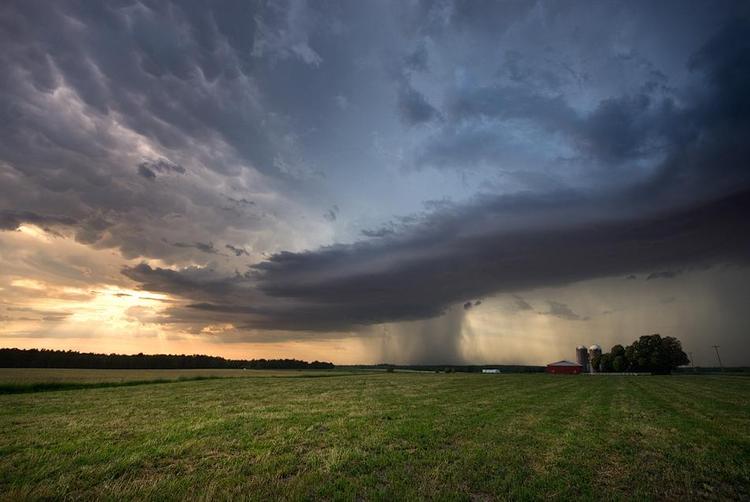Canadian farmers combat weather extremes

Canadian farmers are battling to get their crops in the ground across many parts of the Prairies as heavy rains continue to thump eastern cropping districts, and a continuation of last year’s drought conditions delays the planting program in the western regions.
In April, record-breaking precipitation in southern Manitoba and eastern Saskatchewan improved moisture conditions across the region, taking much of the area out of the drought classification. But the rains have continued to such an extent that the ground is now far too wet for many farmers to even contemplate mobilising their seeding equipment.
Midway through last week, Agriculture and Agri-Food Canada (AAFC) reported that practically no spring planting had been completed in much of Manitoba, with more than 90 per cent of the province’s cropping area suffering from excessive moisture. As of May 17, AAFC reported that just 4pc of the province’s spring crops had been planted, seriously lagging the five-year average of 50pc.
Farmers in parts of Manitoba are reportedly swapping some of their intended corn and soybean area into wheat, barley and canola as their growing seasons are shorter. Growing degree days become critical for the Canadian summer crops if spring planting is substantially delayed. The crop will simply run out of time to mature before the day length decreases dramatically and the autumn rains arrive.
At the beginning of last week, Saskatchewan Agriculture estimated that 33pc of the province’s crops had been planted, the slowest crop seeding pace since 2017. This compared to 74pc at the same time last year and a five-year average of 53pc.
While the pace in the three western regions of the province remains ahead of their respective five-year average, the soil-moisture profile in large parts of the planted area is far too dry for good seed germination. It is the antithesis in the three eastern regions, where seeding is falling further behind the five-year average pace due to the cool and extremely wet conditions.
Further west, Alberta has missed out on most of the rain, leading to an extension of drought conditions in many regions. According to AAFC, less than 40pc of average precipitation fell in southern Alberta last month, exacerbating the arid conditions experienced over the past six months.
An estimated 29pc of the Canadian Prairies is rated as abnormally dry or in moderate to extreme drought, including 63pc of the region’s agricultural areas. Around 25pc of Alberta’s farming districts, representing 17.8 million hectares (Mha), are experiencing significant drought conditions.
The extreme weather conditions will make it extremely difficult for Canadian farmers to meet the planting intention forecasts released by Statistics Canada late last month. The total wheat area was forecast to rise by 5.8pc year on year to 10.05Mha. The spring wheat area is up 6.4pc to 7.12Mha, the durum wheat area is up 9.5pc to 2.45Mha and the winter-wheat area, planted in autumn last year, is projected to be down 13pc to 490,000 hectares.
The area planted to barley is forecast at 3.3Mha, down slightly from 3.36Mha last year. The oats area is expected to increase from 1.39Mha last year to 1.5Mha in the current campaign. Statistics Canada pegged the lentil area at 1.8Mha, up from 1.74Mha in 2021, and the field pea area at 1.65Mha compared to 1.55Mha last year. On the summer crop front, Statistics Canada pencilled in corn for 1.42Mha, fractionally above last season, and the forecast soybean plantings came in at 2.3Mha, almost 7pc higher than 2021.
Canadian farmers are expected to plant 8.8Mha of their farmland to canola this year, down from 9.1Mha in 2021 but much higher than 2020 plantings of 8.41Mha. Canada is the world’s biggest canola seed producer and exporter, and the lower area comes despite robust global demand and extremely high prices. Statistics Canada said that uncertainty stemming from the coronavirus pandemic and international geopolitical conflicts, primarily the China ban on Canadian canola, likely influenced seeding decisions.
However, the Canadian Government announced midway through last week that China had lifted the ban on Canadian canola and reinstated market access for the two major grain firms whose exports had been blocked from Chinese ports since March 2019. Chinese customs officials confirmed that they would allow Richardson International and Viterra to resume canola sales to China.
While the ban did not affect canola seed exports by other Canadian companies, Richardson and Viterra were far and away the biggest exporters at the time it was imposed. The Canadian Canola Council noted the value of canola seed exports to China dropped from US$2.8 billion in 2018 to $800 million in 2019, then rose to $1.4B in 2020 and $1.8B in 2021, the latter impacted by a significantly lower exportable surplus due to drought.
Production issues abound in the Northern Hemisphere, with an extremely stubborn La Niña defying the pundits and intensifying over the last few months. The domestic and global balance sheets for Canada’s key exports of wheat and canola are tight following a string of crop failures in 2021-22, the war in Ukraine and a global spike in protectionism to fight food inflation. A return to trend production in Canada is critical for domestic and export supplies to help alleviate worldwide shortages and tame the current high-price regime.
Read also
Wheat in Southern Brazil Impacted by Dry Weather and Frosts
Oilseed Industry. Leaders and Strategies in the Times of a Great Change
Black Sea & Danube Region: Oilseed and Vegoil Markets Within Ongoing Transfor...
Serbia. The drought will cause extremely high losses for farmers this year
2023/24 Safrinha Corn in Brazil 91% Harvested
Write to us
Our manager will contact you soon



